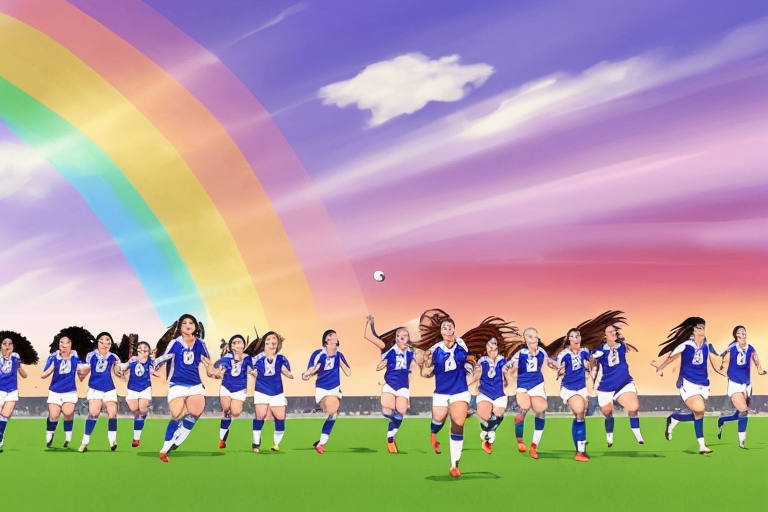The Power of Music: Why Film Soundtracks Matter
Movies are a visual medium, but soundtracks play a critical role in their success. A great soundtrack can evoke emotions, set the tone, and transport viewers to another world. In recent years, film soundtracks have become more important than ever, with many movies relying on them to enhance the overall experience. In this article, we will explore the history of film soundtracks and why they have become such a vital aspect of movies.
One reason why soundtracks are so important is that they can help create an emotional connection between the viewer and the movie. When done right, a soundtrack can make the audience feel like they are a part of the story, experiencing the same emotions as the characters on screen. For example, the soundtrack for The Lion King (1994) is an integral part of the movie’s success, helping to create a sense of wonder and awe that is essential to the story.
Another reason why soundtracks are important is that they can set the tone for a movie. A great soundtrack can create a sense of tension, excitement, or even humor, depending on the needs of the story. For example, the soundtrack for Jaws (1975) is famous for its use of a simple two-note melody to create a sense of impending danger, while the soundtrack for Guardians of the Galaxy (2014) uses classic rock songs to create a fun and upbeat tone.
Soundtracks can also help to transport viewers to another world. By using music to create a specific atmosphere, a soundtrack can make the audience feel like they are in a different time or place. For example, the soundtrack for The Lord of the Rings trilogy (2001-2003) is an essential part of the movies’ success, helping to create a sense of epic grandeur that is essential to the story.
In recent years, soundtracks have become even more important, with many movies relying on them to enhance the overall experience. From the use of popular songs to collaborations with popular artists, soundtracks are now an integral part of the movie-making process. In the following sections, we will explore the history of film soundtracks, famous scores, the rise of popular music in film, and collaborations in the modern era. By the end of this article, you will have a better understanding of why soundtracks have become such a vital aspect of movies and what the future holds for this important art form.
The Power of Music: Enhancing the Film Experience
Movies have the power to transport us to different worlds and evoke a range of emotions. One essential aspect of this experience is the film soundtrack. From the early days of sound in film to the modern era, music has played a vital role in enhancing the viewing experience.
In the early days of sound in film, silent films were accompanied by live orchestral music. These accompaniments were crucial in conveying the emotions of the characters on screen and creating a more immersive experience for the audience. As technology advanced, the era of live orchestral accompaniment evolved into the use of recorded soundtracks.
The first recorded soundtrack was used in the 1927 film “The Jazz Singer,” which featured Al Jolson. This marked a significant turning point in the history of sound in film, as it paved the way for the use of sound in movies. The use of recorded soundtracks allowed for greater flexibility in the use of music in films, as well as the ability to incorporate sound effects.
One of the most iconic movie scores of all time is John Williams’ soundtrack for “Star Wars.” The score is instantly recognizable and has become synonymous with the franchise. Williams’ ability to capture the essence of the film’s characters and themes through music is a testament to the power of film soundtracks.
Another memorable soundtrack is Ennio Morricone’s score for “The Good, the Bad and the Ugly.” The use of whistling and other unconventional instruments created a unique and unforgettable sound that perfectly complemented the film’s Western setting. Morricone’s score has become a classic and is still widely recognized today.
In the modern era, collaborations between popular artists and film composers have become increasingly common. One example is the soundtrack for “A Star is Born,” which featured original songs by Lady Gaga and Bradley Cooper. The soundtrack was a critical and commercial success, with songs like “Shallow” becoming instant hits.
The use of popular music in film has also helped raise the profile of up-and-coming artists. The soundtrack for “The Lion King” (2019) featured original songs by Beyoncé, which helped introduce her music to a new audience.
Goosebump Moments: Famous Scores
Movie soundtracks have the power to transport us to another world, evoke emotions, and leave us with unforgettable memories. From the early days of sound in film to the modern era, music has become an essential aspect of the movie-watching experience. In this section, we will explore some of the most famous movie scores and the emotions they evoke in viewers.
The first movie soundtrack was created in 1927 for the film “The Jazz Singer.” However, it wasn’t until the 1930s that soundtracks became an integral part of movies. One of the most famous early soundtracks is Max Steiner’s score for “King Kong” (1933), which featured a full orchestra and helped set the tone for the movie’s epic adventure.
In the 1960s, Ennio Morricone revolutionized the movie soundtrack with his iconic score for “The Good, The Bad, and The Ugly” (1966). The soundtrack features the haunting melody “The Ecstasy of Gold,” which has become synonymous with the film’s climactic scene. The score also features the character Uvanni, who is one of the most memorable characters in the movie.
John Williams is another composer who has left an indelible mark on the movie soundtrack. His work on the “Star Wars” franchise has become iconic, with the main theme instantly recognizable to fans around the world. The music helps transport viewers to a galaxy far, far away and adds to the epic nature of the movies. Williams has also composed scores for other famous movies, including “Jaws,” “Indiana Jones,” and “Jurassic Park.”
Other famous movie scores include Hans Zimmer’s work on “The Lion King” (1994), which features the iconic song “Circle of Life,” and James Horner’s score for “Titanic” (1997), which includes the haunting melody “My Heart Will Go On.” These soundtracks have become an integral part of the movies they accompany and have helped to elevate them to iconic status.
Movie soundtracks have the power to evoke a wide range of emotions in viewers. They can make us feel happy, sad, scared, or excited, and they help to create an immersive movie-watching experience. Whether it’s the iconic theme from “Star Wars” or the haunting melody from “The Good, The Bad, and The Ugly,” movie soundtracks have become an integral part of our cultural landscape.
The Power of Popular Music in Film
In the early days of film, soundtracks primarily consisted of orchestral scores and classical music. However, as the film industry evolved, so did the use of music in movies. In the 1960s, popular music began to make its way into films, and it quickly became a vital aspect of the movie-going experience.
One of the earliest examples of popular music in film was the use of rock and roll in “Blackboard Jungle” (1955). The film’s opening credits featured Bill Haley and His Comets’ hit song “Rock Around the Clock,” which became an instant sensation and helped to popularize rock and roll music.
As the 1960s progressed, popular music continued to play a significant role in film. The Beatles’ film “A Hard Day’s Night” (1964) featured the band’s music and helped to establish them as cultural icons. Similarly, the use of Simon & Garfunkel’s music in “The Graduate” (1967) helped to define the film’s tone and themes.
In the 1980s and 1990s, popular music in film reached new heights with the rise of the music video. Films like “Flashdance” (1983) and “Dirty Dancing” (1987) featured hit songs that were accompanied by iconic dance sequences. These films not only helped to popularize the songs but also became cultural touchstones.
Today, popular music continues to play a significant role in film. Soundtracks featuring popular artists have become a common occurrence, with many films using music to help promote new and upcoming artists. For example, the soundtrack for “A Star is Born” (2018) featured original songs performed by Lady Gaga and Bradley Cooper, which helped to promote both the film and the artists.
The use of popular music in film has also been influenced by the changing times and musical trends. In recent years, the rise of hip-hop and electronic dance music (EDM) has led to an increase in the use of these genres in film soundtracks. For example, the soundtrack for “The Lion King” (2019) featured original songs by Beyoncé, which incorporated elements of hip-hop and African music.
Collaborations between filmmakers and musicians have also become more common in recent years. These collaborations have helped to create some of the most successful movie soundtracks of all time. For example, the soundtrack for “Frozen” (2013) featured original songs by Kristen Anderson-Lopez and Robert Lopez, which were performed by the film’s cast. The soundtrack became a massive success, winning an Academy Award for Best Original Song and becoming the highest-selling album of 2014.
Collaborations in the Modern Era
In recent years, movie soundtracks have evolved to include popular artists collaborating with composers to create a unique and memorable soundtrack. This collaboration has become a significant aspect of modern-day movie soundtracks, and it has resulted in some of the most successful soundtracks in recent years.
One example of a successful collaboration is the soundtrack for the 2018 movie “A Star is Born,” which featured Lady Gaga and Bradley Cooper. The soundtrack was a critical and commercial success, with songs like “Shallow” winning an Academy Award for Best Original Song. The collaboration between Lady Gaga and Bradley Cooper resulted in a unique and emotional soundtrack that resonated with audiences worldwide.
Another example of a successful collaboration is the soundtrack for the 2019 remake of “The Lion King,” which featured Beyoncé and other popular artists. The soundtrack was a commercial success, with songs like “Spirit” and “Can You Feel the Love Tonight” receiving critical acclaim. The collaboration between Beyoncé and other popular artists resulted in a unique and diverse soundtrack that captured the spirit of the movie.
Collaborations in movie soundtracks are successful because they bring together different artists with different styles and backgrounds. This collaboration results in a unique and diverse soundtrack that resonates with audiences worldwide. Collaborations also help to raise the profile of up-and-coming artists, giving them a platform to showcase their talent.









